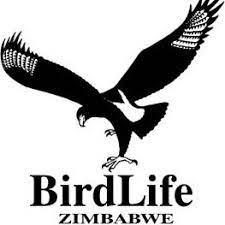IMPORTANT BIRD AREAS
Z017 Chirinda Forest
FULLY PROTECTED
GLOBAL IBA (Al, A2, A3)
20°25’S; 32°42’E
c. 950 ha
SITE DESCRIPTION
Chirinda Forest consists of tropical rainforest covering the two rounded hilltops of Mt Selinda. The Forestry Commission administers Chirinda. It is situated 30 km south of Chipinge town, and is easily accessible along a tar road. Mt Selinda rises to 1 200 m a.s.l. from the surrounding plateau and Mozambican coastal plain. Being the highest hill until the Indian Ocean coast is reached, 400 km to the east, it is frequently covered in cloud and mist, and it receives about 1 400 mm of orographic rain p.a. The mists are an important extra source of precipitation. Prevailing throughout the dry season, they permit the survival of forest species in an area which would otherwise be too dry for them. Chirinda Forest covers 950 ha, of which 606 ha is moist forest and the remainder bushland or woodland. The forest covers the moisture-laden south and south-eastern slopes. Dense woodland replaces the forest on the drier northern slopes. The deep, fertile soils that are derived from dolerite support the true forest. Sandy soils derived from feldspathic sandstones and phyllitic mudstones support woodland, shrubland or grassland. Chirinda is classified as a medium-altitude or sub-montane forest, and it is representative of a forest type that was previously widespread throughout the Eastern Highlands. It is an island surrounded by a sea of agricultural land. The forest is well developed, with the canopy reaching 40-55 m in height. The dominant species are Chrysophyllum gorungosanum, Craibia brevicaudata and Trichilia dregeana with occasional emergents such as Khaya anthotheca, Lovoa swynnertonii and Ficus chirindensis interspersed. The shrub layer is dominated by Dracaena fragrans. The woody species represent a mixture of elements from Afromontane and East African coastal forests with some West African and Congo forest affinities.
BIRDS
Chirinda’s avifauna is unusual as it is a mixture of high, medium and low-altitude forest species. Typically, high and low-altitude species from forests further north and south respectively are missing. Chirinda is the type locality for the globally threatened Swynnerton’s Robin Swynnertonia swynnertoni, which usually nests in Dracaena fragrans. The following species have type locality races in Chirinda Forest (M.P.S. Irwin, pers. comm.): White-tailed Crested Flycatcher Trochocercus albonotatus swynnertoni, Square-tailed Drongo Dicrurus ludwigii tephrogaster, Olive Thrush Turdus olivaceus swynnertoni, White-starred Robin Pogonocichla stellata chirindensis, Bar-throated Apalis Apalis thoracica arnoldi, Cape Batis Batis capensis erythrophthalma, Black-fronted Bush-shrike Telophorus nigrifrons sandgroundi, Olive Sunbird Nectarinia olivacea sclateri and Dark-backed Weaver Ploceus bicolor sylvanus. Races of Red-necked Spurfowl Francolinus afer swynnertoni and Wailing Cisticola Cisticola lais mashona also have their type localities at Chirinda, but they occur in the adjacent grassland and not in the forest.
OTHER THREATENED/ENDEMIC WILDLIFE
Notable species of rare rodents are Aethomys silidensis and Uranomys ruddi, the shrew Mysorex cafer and elephant shrew Petrodomus tetradactylus swynnertoni. The Tree Civet Nandinia binotata, Sun Squirrel Heliosciurus mutabilis, the endemic race of the Red Squirrel Paraxerus palliatus swynnertoni and the Samango Monkey Cercopithecus mitis are all rare arboreal frugivorous mammals that contribute to the dispersal of seeds. The Blue Duiker Philantomba monticola is a common inhabitant of the forest floor. The montane forest herpetofauna are represented by Rhampholeon marshalli and Strongylopus grayii. The East African lowland herpetofauna is represented by Gaboon Adder Bitis gabonica, Naja melanoleuca, Dendroaspis angusticeps, Natriciteres sylvatica, Dasypeltis medici, Stephopaedes anotis (type locality), Arthroleptis xendactyloides (type locality) and Leptopelis flavomaculatus. Chirinda is also the type locality for Hyperolius marmoratus swynnertoni.
Butterflies are the best known invertebrate group in Chirinda and over 80 species occur in the forest. There is only one known endemic, Mimacrea neokoton, and two species with very restricted ranges: Anthene sheppardi and Pentila swynnertoni.
CONSERVATION ISSUES
Chirinda Forest is threatened by the increasing number of rural people surrounding it. Poaching of birds and Blue Duiker, and firewood collection are likely to have an increasingly adverse effect on the forest. The forest is too small to sustain much timber utilisation, although limited use of forest plants for traditional medicines is viable. The conservation of this forest (as with others in the Eastern Highlands) is dependent on its public profile being raised. This can be achieved through promoting its educational and aesthetic values, thereby attracting greater numbers of tourists. The local community could then derive some direct economic benefit (revenue) from the forest. It is one of the best-researched forests in Zimbabwe, with scientific collections of flora and fauna being made as early as 1900 by Charles Swynnerton. Swynnerton’s name is inextricably linked with Chirinda as many of the species are named after him. Chirinda contains a giant specimen of Khaya anthotheca, known as the Big Tree, measuring 54 m high and 5.25 m circumference around the base. The Big Tree is considered to be at least 1 000 years old and it is a National Monument.
Globally threatened
Swynnerton’s Robin – Breeding (pairs) – 20 – 66 | Total Numbers – 60 – 150
RR & BRA | STATUS
Grey Cuckooshrike | Fairly Common
Stripe-cheeked Greenbul | Common
Swynnerton’s Robin Fairly | Common
White-starred Robin | Common
Yellow-throated Woodland-warbler | Common
Chirinda Apalis | Common
White-tailed Crested Flycatcher | Common
Gorgeous Bush-shrike Fairly | Common
Olive Bush-shrike Fairly | Common
Yellow-bellied Waxbill | Abundant
RR & BRA – Restricted-range and Biome-restricted Assemblage
